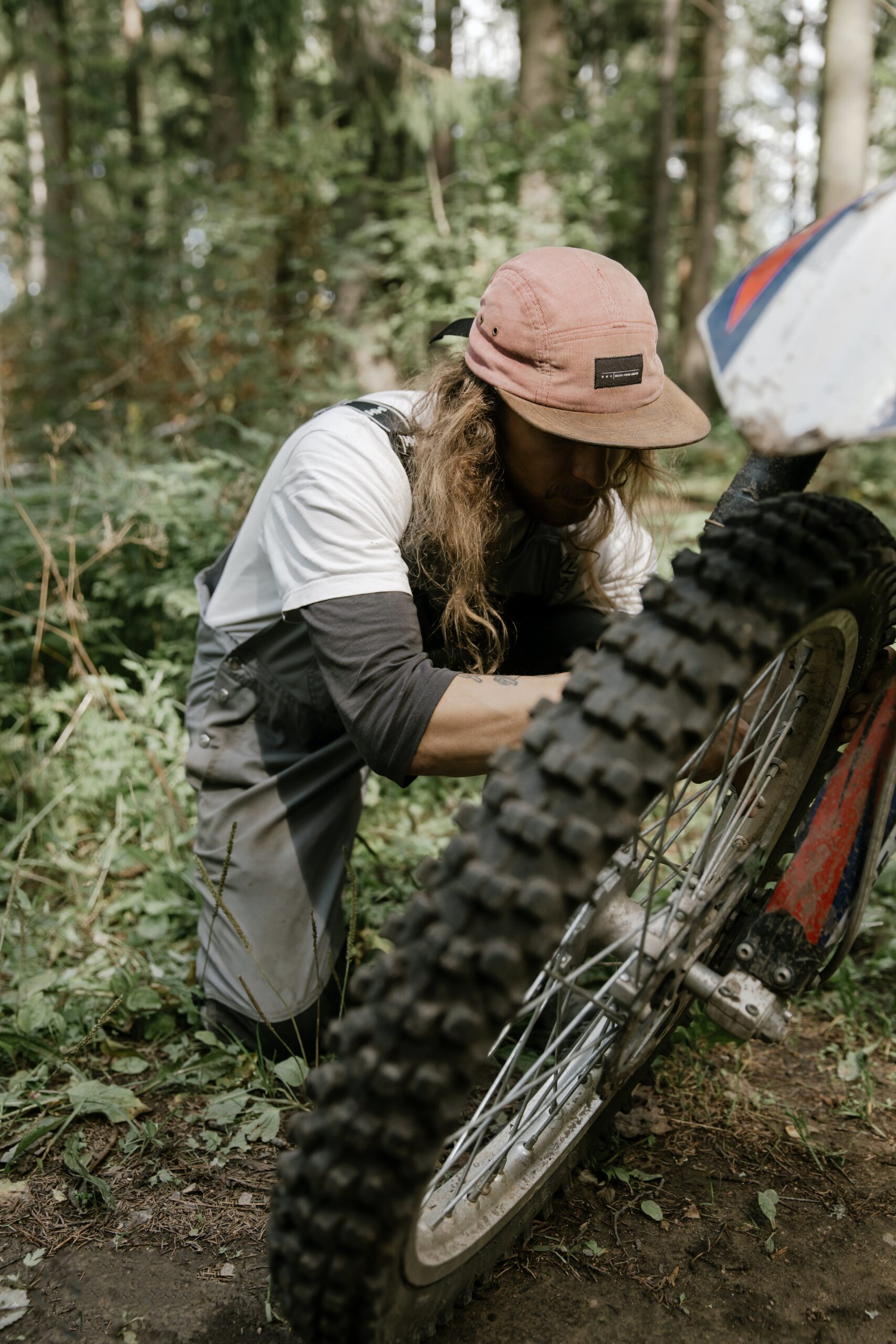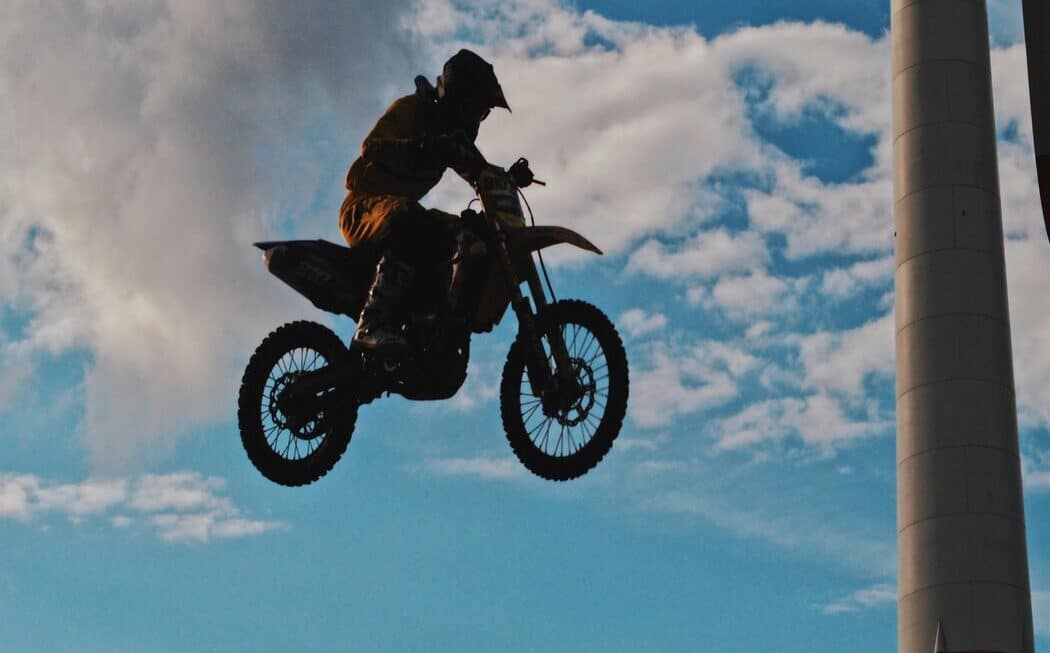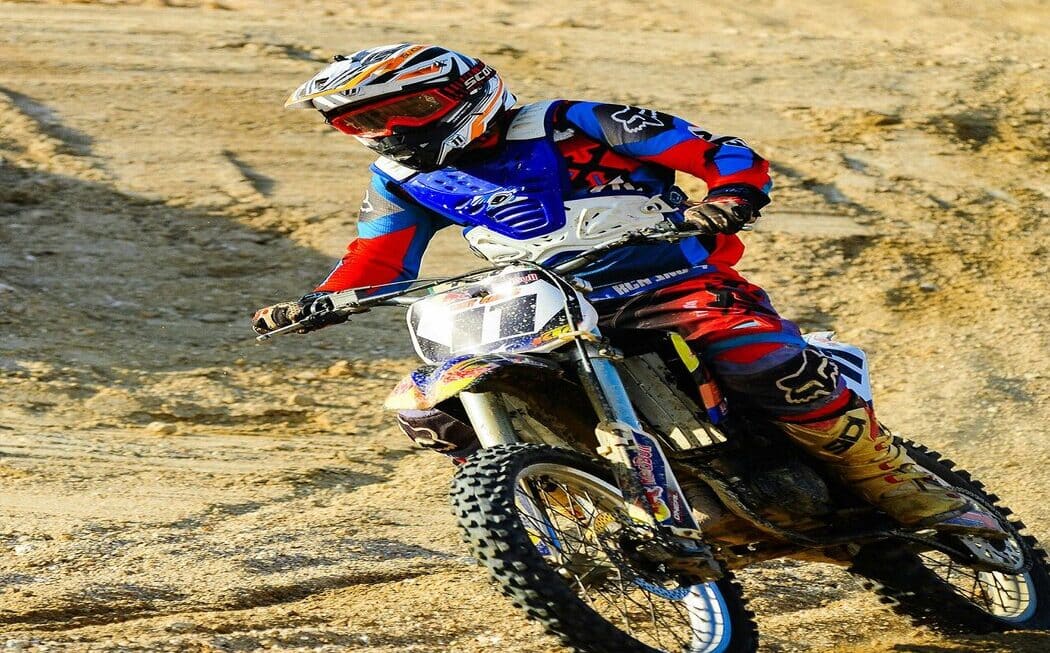Tires are an essential part of any dirt bike, and their condition will have a drastic effect on how you ride. Not only do different terrain types require different tread patterns and compounds, but over time these components may wear out and need to be replaced. Deciding when to replace dirt bike tire can be a difficult task because there are both physical signs to consider as well as the type of compound being used.
Different Compounds Available on Dirt Bikes:
Before discussing the physical characteristics of a worn tire, it is essential to understand the different compounds available on dirt bike tires. These compounds range from hard-pack rubber for dry conditions to soft rubbers that offer more traction in wet or muddy environments. Understanding when you should be using one compound over another can help keep your tires in better shape longer, but you will still want to watch for signs of wear nonetheless. Physical signs that indicate your tire is past its prime include warping or cracking, excessive balding, cracking knobs, and tears along the sidewalls. If any of these are visible it’s probably time to start shopping around for a new tire!
Soft Compound Tires
Soft compound tires generally provide the best grip when riding on slick or technical terrain. They are made of softer rubber compounds designed to flex, giving a greater surface area of the tire in contact with any given terrain. As such, these tires are more popular among professional extreme enduro athletes who need to handle rides that require more thorough traction than the average rider would expect from their tires.
Though they offer superior grip compared to other tire compounds, soft compound tires have some negatives associated with them – namely an accelerated rate of wear and tear. The rubber is so soft that it can potentially only last through one race rather than multiple races like typical tires do, making this an unreliable choice for those protective over their gear selection. Popular types of soft compound tires include options from Maxxis and Schwalbe which all cost varying amounts depending on size and specific type. Ultimately, it comes down to personal preference when deciding which ones are best suitable for your unique style of riding.
Intermediate Compound Tires
Intermediate compound tires are great for riders looking for that all-in-one tire. With a toothier lug than some more advanced tires, these will offer solid traction and longevity no matter the course’s terrain. Whether you’re shredding through clay, sand, or loam, an intermediate tire will give you the confidence to tackle it head-on. They are the go-to choice for OEM bikes due to their balanced performance across different types of track surfaces while still providing significant grip and support during long rides.
Intermediate compound tires are great for riders looking for that all-in-one tire. With a toothier lug than some more advanced tires, these will offer solid traction and longevity no matter the course’s terrain. Whether you’re shredding through clay, sand, or loam, an intermediate tire will give you the confidence to tackle it head-on. They are the go-to choice for OEM bikes due to their balanced performance across different types of track surfaces while still providing significant grip and support during long rides.
Popular intermediate tires from reliable brands like Maxxis and Schwalbe are extremely popular among riders because they come in a variety of sizes and compositions that make them adaptable to multiple riding styles. These can range from blocky cross-country treads to full-blown downhill options made with durably engineered compounds. Depending on your preference, you’ll find one that fits your skill set as well as your specific bike makeup! With some trial and error, intermediate tires often offer a great solution to quickly getting up to speed out on the trails.
Hard Compound Tires
Hard compound tires are a great choice for motorcyclists who are looking for an extra long-lasting, durable tire. When there is a need to traverse through daring locations like the Baja 1000, or on extremely soft surfaces like sand, mud, or deep loam, these hard tires provide an important sense of security and longevity. Hard lugs dominate in soft terrain tires which gives it the unique paddle-like design to better dig and propel bikes forward when the going seems tough. Thanks to this design and hard rubber construction, motorcyclists can significantly reduce stress on the bikes’ engines as well as reduce physical abuse!
If taken care of properly and regularly maintained accordingly, owners can see their money’s worth with these hard compound tires as they can last for extended periods – sometimes even longer than expected! They have placed themselves among the best investments that individuals make when it comes to motorcycle components. Working together reduces challenges caused by arduous terrains while maintaining its estimated life expectancy; this makes having these types of tires a no-brainer.
Signs That Show When to Replace Dirt Bike Tire
Replacing tires is a necessary part of car ownership. Without regular maintenance and timely replacement, the treads on your tires can become dangerously thin, leading to unsafe driving conditions and eventually an accident. Identifying when it is time or near time to replace your tires can be difficult, but there are some tell-tale signs that you should look out for.
Missing/Ripping Lugs
Having missing or ripped lugs on a dirt bike tire can have serious implications while riding. As the rider, you may begin to notice decreased performance, especially in cornering and traction. When lugs are starting to come off the tire it means that the life of the tire is quickly coming to an end. Not only will a lack of lugs diminish the tires’ performance, but they can also cause dangerous problems. Missing lugs can easily turn into holes throughout the whole carcass of the tire, leading to flats and possibly even complete tire failure mid-moto.
To avoid further damage and safety risks it is advised that if you notice any lugs coming off from normal wear and tear you replace the entire tire before it becomes a major problem. Whilst factory race teams may cut certain lugs off tires to get them exactly how they need them for optimum performance, this should only be done by trained professionals with access to a variety of tires. Ultimately, taking preventative action early on can help reduce potential issues occurring during your ride time when it comes to missing or ripped lugs on your dirt bike’s tires.
Tubes
Tubes are an essential part of bike maintenance, however they can be easily overlooked. When changing a tire, it is important to assess the tube for any signs of damage or wear. A common place to find wear is the valve stem and seam. Weak spots in the tube can cause air leakage resulting in flat tires down the road. To avoid this happening, careful inspection should be carried out when replacing tires.
When choosing a tube to replace an old one, there is a wide range of options available. Lightweight tubes are designed for short-term performance while heavy-duty options are specifically designed for off-road conditions. It’s important to choose the right type depending on your style of riding and the terrain which your bike will face with. High-quality tubes provide better reliability and improved ride comfort as well as offer peace of mind when taking longer journeys on rough terrain
Discoloration/Aging
As tires age, they undergo a dramatic change in their composition. Over time, the rubber used to make the tread of tires hardens and becomes brittle due to exposure to heat, the sun’s ultraviolet rays and roadway abrasion caused by driving or other activities. If you notice your tires have faded in color or are now more than a year old, you should be aware that the physical properties of the tire have been permanently affected in such a way that its overall quality is no longer reliable.
The danger of aging tires lies in their inability to flex under impacts from hitting bumps or other rugged terrain. This lack of flexibility can cause cracks on the sidewall which may eventually lead to metal-casing breaches inside the tire’s walls or loss of air pressure – both potentially hazardous to vehicle operation and the vehicle’s occupants. Replace aging tires with fresh ones as soon as possible for ultimate safety and peace of mind; after all, it’s better (and less expensive) to err on the side of prevention incidents than sorry later down the line.
Mousse and Tube Wear
These are common internal components of tires that serve different purposes, but each of their wear cycles has to be taken into consideration when caring for your bike. Mousse is used in place of a tube inside a tire, offering more protection against punctures and enabling riding at lower air pressures. Mousse does however wear over time, needing to be changed depending on usage and the terrain ridden on. Tubes used inside a tire may not provide as much protection from flatting, but they can last an incredibly long time if stored correctly when not being used. Furthermore if using latex inner tubes, checking every month or so for any loss of pressure can prepare you for any potential leaks.
It is important to know when to replace or upgrade an internal component such as mousse or tube wear when riding off-road bikes to save money in the long run without sacrificing rider safety. Wear can vary drastically depending on both the terrain ridden and individual preferences, and knowing when it’s time to switch up a device in case of abnormal wear or tear could make all the difference between continuing your ride undisturbed or having to cut it short due to an unexpected Flat. Maintenance should always come first no matter what you choose:
Balding
Balding tires are a common occurrence among motorists and motocross riders who regularly make use of their vehicles. It is the first immediate sign of tire wear that most riders will start to notice when they are actively using their ride. When your lugs begin to round off and become more circular and less square-edged, this means that there is no longer a hard wall for the tire to cut into the dirt. Ultimately, this undermines both traction and the volume of dirt displacement which are both essential for your ride to smoothly move forward.
To counter balding tires, it’s important to invest in a decent quality set of rubber at least occasionally over time. Additionally, you can proactively extend the life of your balding tires by reducing wheel spin on low-traction surfaces like wet or loose terrain which tend to quickly wear away at treads. Although it may be necessary to replace balding tires eventually, such proactive steps can greatly reduce how frequent these replacements need to be.
Sidewall Deterioration/Bead Tears
Sidewall deterioration and bead tears are often overlooked aspects of tire wear that can have serious consequences if left unattended. This is the area directly between the tread and introducing the wheel, which is constantly exposed to flexing and contact with road surfaces. Over time, this can lead to cracks and tears appearing on the sidewall of your tires. These cracks may seem small at first, but if they are not promptly addressed these cracks may be powerful enough to cause tire rupture. This could result in serious injury or damage to other parts of the vehicle like the rims or chassis, should it happen while driving at speeds.
A proactive approach is always best when avoiding unwanted problems with your tires – inspect your sidewalls regularly to look for any signs of cracking or tearing before they become a major issue. If you happen to notice any disturbances in this area, it’s important to have a new tire put on as soon as possible both for safety reasons and to avoid having extra damage inflicted upon other components of the vehicle. Taking care of your tires today will also save money in the long run since you won’t need to replace a set of rims or drastically reduce their useful life due to excessive wear and tear from an
When Does Your Dirt Bikes Need New Tires?
If you’re riding a dirt bike, it’s important to inspect the tires before each use. You should check to see if the tires are in good condition and when they might need replacement. If you can’t tell when it’s time for new tires, here are some signs to look for. Start by examining the knobs on your dirt bike tire. If they are rounded down or short compared with what fresh knobs would look like, then it is time to get new ones. The worst-case scenario is that your knobs have been completely chunked off which leaves gaps – this also means that you need to replace them.
In addition to checking the knobs on the tire, you should also be aware of how many times you ride a dirt bike with these same tires. With time and wear, even technically sound tire knobs can lose their effectiveness leading to decreased performance on uneven surfaces. Make sure your skills on the track match your safely equipped vehicle; this means replacing old dirt bike tires as necessary! Do not put yourself or others in danger by using outdated parts. Stay safe and keep your dirt bike properly maintained at all times!
Read More: How To Repair A Flat Tire On Your Dirt Bike



